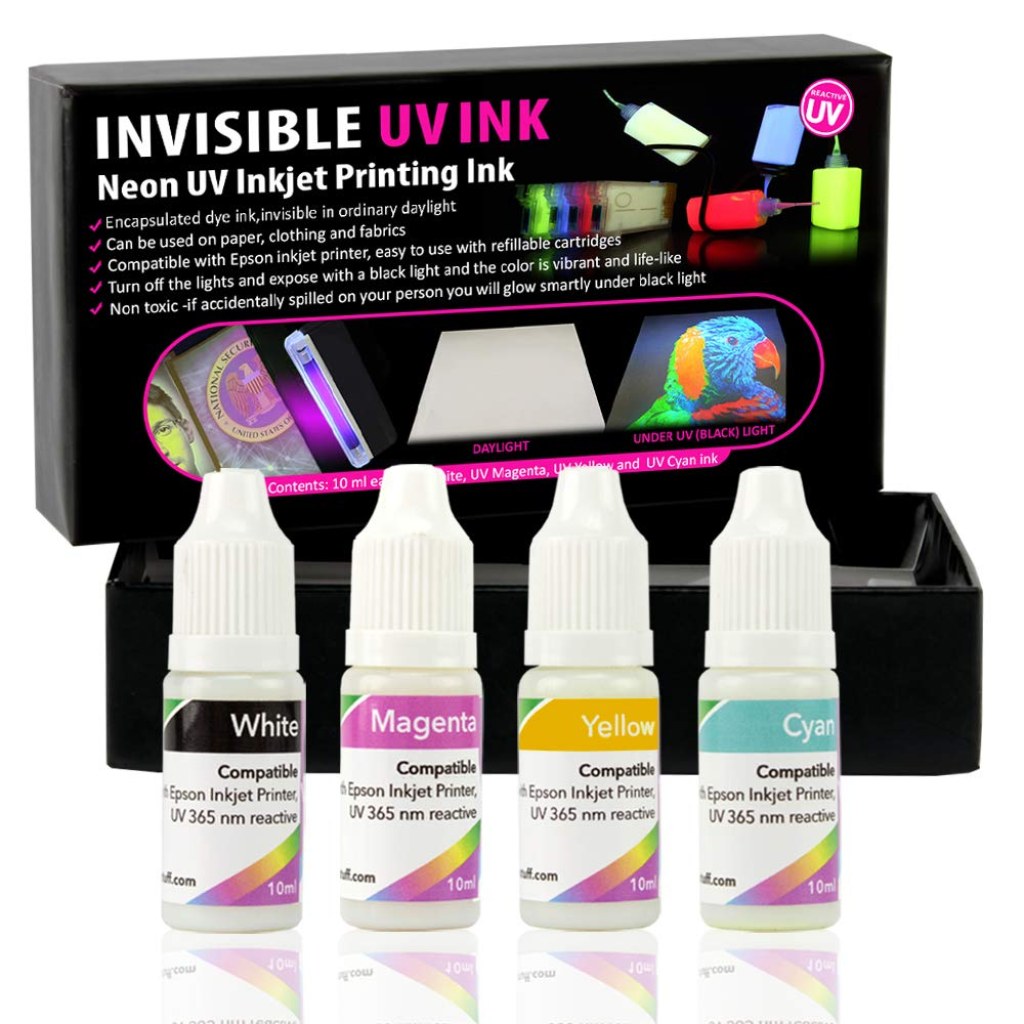Unleash The Power Of Light With Printer Ink: A Game-Changing CTA
Printer Ink is Light
Introduction
Greetings, Readers! Today, we will be diving into the fascinating world of printer ink. Have you ever wondered why printer ink seems so light? In this article, we will explore the science behind printer ink and shed light on its unique properties. So, let’s jump right in!
Printer ink is a vital component in the printing process. It is responsible for creating the text and images that we see on paper. But have you ever noticed that printer ink appears lighter than other types of ink? This intriguing phenomenon has puzzled many, and we are here to unravel the mystery.
1 Picture Gallery: Unleash The Power Of Light With Printer Ink: A Game-Changing CTA

In this article, we will provide you with a comprehensive overview of printer ink, including its composition, characteristics, and advantages. By the end, you will have a deeper understanding of why printer ink is light and its significance in the printing industry.
What is Printer Ink?
Printer ink is a liquid substance that is used by printers to produce text and images on various types of media, such as paper or fabric. It is typically made up of pigments, solvents, and additives. The pigments give the ink its color, while the solvents ensure that the ink flows smoothly and dries quickly.
Printers use different types of ink, depending on the printing technology they employ. The two most common types are dye-based ink and pigment-based ink. Dye-based ink is known for its vibrant colors and is commonly used in home printers. On the other hand, pigment-based ink offers better longevity and is often used in professional printing applications.

Image Source: media-amazon.com
Now that we have a basic understanding of printer ink, let’s explore the various aspects of this fascinating substance.
Who Invented Printer Ink?
The invention of printer ink dates back to the early days of printing technology. The exact individual who first developed printer ink is unknown, as ink has been used for writing and printing for thousands of years. However, the modern formulation of printer ink can be attributed to the advancements in inkjet printing technology.
Inkjet printing, which utilizes tiny nozzles to spray ink onto the printing surface, revolutionized the printing industry. This technology allowed for faster and more cost-effective printing, making it accessible to a wider audience. As a result, printer ink became an essential component in households, offices, and various industries.
When Was Printer Ink First Used?
The use of ink for printing can be traced back to ancient civilizations. Early forms of ink were made from natural materials, such as plant dyes and soot. These inks were used with various writing instruments, such as brushes and quills, to create manuscripts and documents.
However, printer ink, as we know it today, was first used in the mid-20th century with the rise of inkjet printing technology. This marked a significant milestone in the printing industry, as it allowed for high-quality printing at a fraction of the cost.
Where is Printer Ink Produced?
Printer ink is produced in specialized manufacturing facilities. These facilities are equipped with state-of-the-art machinery and adhere to strict quality control measures to ensure the consistency and reliability of the ink produced.
Many major printer manufacturers have their own ink production facilities, where they formulate and produce ink specifically designed for their printers. Additionally, there are independent ink manufacturers that produce compatible ink cartridges that can be used with various printer brands.
Why is Printer Ink Light?
The lightness of printer ink is due to its composition. Printer ink is formulated to have a low density, allowing it to flow easily through the printer nozzles and onto the printing surface. The low density also contributes to faster drying times, reducing the chances of smudging or smearing.
Furthermore, the pigments used in printer ink are finely ground particles that are dispersed within the ink solution. These particles are suspended in the liquid medium, giving printer ink its characteristic translucency. This translucency contributes to the lighter appearance of printer ink when printed on paper.
How is Printer Ink Made?
The manufacturing process of printer ink involves several steps. Firstly, the pigments are carefully selected and milled to achieve the desired color and particle size. The milled pigments are then mixed with solvents and additives to create the ink solution.
Next, the ink solution undergoes rigorous testing to ensure its quality and stability. Once the ink passes the quality control tests, it is packaged into cartridges or bottles for distribution. The packaging is designed to prevent ink leakage and maintain its freshness until it is used.
Advantages and Disadvantages of Printer Ink
Advantages:
1. High Print Quality: Printer ink offers excellent color reproduction and sharpness, resulting in high-quality prints.
2. Versatility: Printer ink can be used on various media, including paper, fabric, and plastic.
3. Quick Drying: Printer ink dries quickly, reducing the chances of smudging or smearing.
4. Longevity: Pigment-based printer ink offers better longevity, ensuring that prints remain vibrant for years.
5. Cost-Effective: Printer ink is available in various price ranges, making it affordable for both home and professional use.
Disadvantages:
1. Ink Consumption: Printer ink cartridges can run out quickly, especially when printing high-quality images or large quantities of documents.
2. Environmental Impact: The disposal of empty ink cartridges can contribute to environmental waste if not recycled properly.
3. Compatibility Issues: Some printers may only accept specific ink cartridges, limiting choices for users.
4. Fade Over Time: Dye-based ink may fade over time, particularly when exposed to sunlight or environmental factors.
5. Cost of Replacement: Printer ink cartridges can be costly to replace, especially for large-scale printing purposes.
Frequently Asked Questions (FAQ)
1. Is printer ink compatible with all printers?
Yes and no. Printer ink comes in different formulations, and not all cartridges are compatible with every printer model. It is essential to check the compatibility before purchasing ink cartridges.
2. How can I make my printer ink last longer?
You can make your printer ink last longer by adjusting the print settings to a lower quality or using draft mode, printing only when necessary, and avoiding unnecessary color printing.
3. Can I refill my printer ink cartridges?
Refilling printer ink cartridges can be done, but it is essential to follow the manufacturer’s guidelines and use high-quality ink to avoid potential damage to the printer or poor print quality.
4. Are there eco-friendly alternatives to printer ink?
Yes, there are eco-friendly alternatives available, such as remanufactured or compatible ink cartridges. These cartridges are made from recycled materials, reducing environmental waste.
5. How should I dispose of empty ink cartridges?
Empty ink cartridges should be properly recycled. Many printer manufacturers offer recycling programs, or you can find local recycling centers that accept ink cartridges.
Conclusion
In conclusion, printer ink is light due to its low density and the suspension of finely ground pigments within the ink solution. This unique characteristic allows the ink to flow smoothly through the printer and onto the printing surface, resulting in high-quality prints.
We have explored the various aspects of printer ink, including its composition, production process, advantages, and disadvantages. Printer ink plays a crucial role in the printing industry, enabling us to bring our ideas to life on paper.
So, whether you are printing a document, a memorable photograph, or a creative masterpiece, take a moment to appreciate the incredible technology behind printer ink. And remember, choose your ink cartridges wisely to ensure optimal performance and minimize environmental impact.
Final Remarks
In this article, we have delved into the world of printer ink and its fascinating properties. From its lightness to its composition, printer ink is a crucial component in the printing process. As technology continues to advance, we can expect further innovations and improvements in printer ink formulations, resulting in even better printing experiences.
Disclaimer: The information provided in this article is for educational and informational purposes only. The content is not intended to be a substitute for professional advice or guidance. Readers are advised to consult with a qualified professional for any printer-related concerns or queries.
This post topic: Printer Ink

